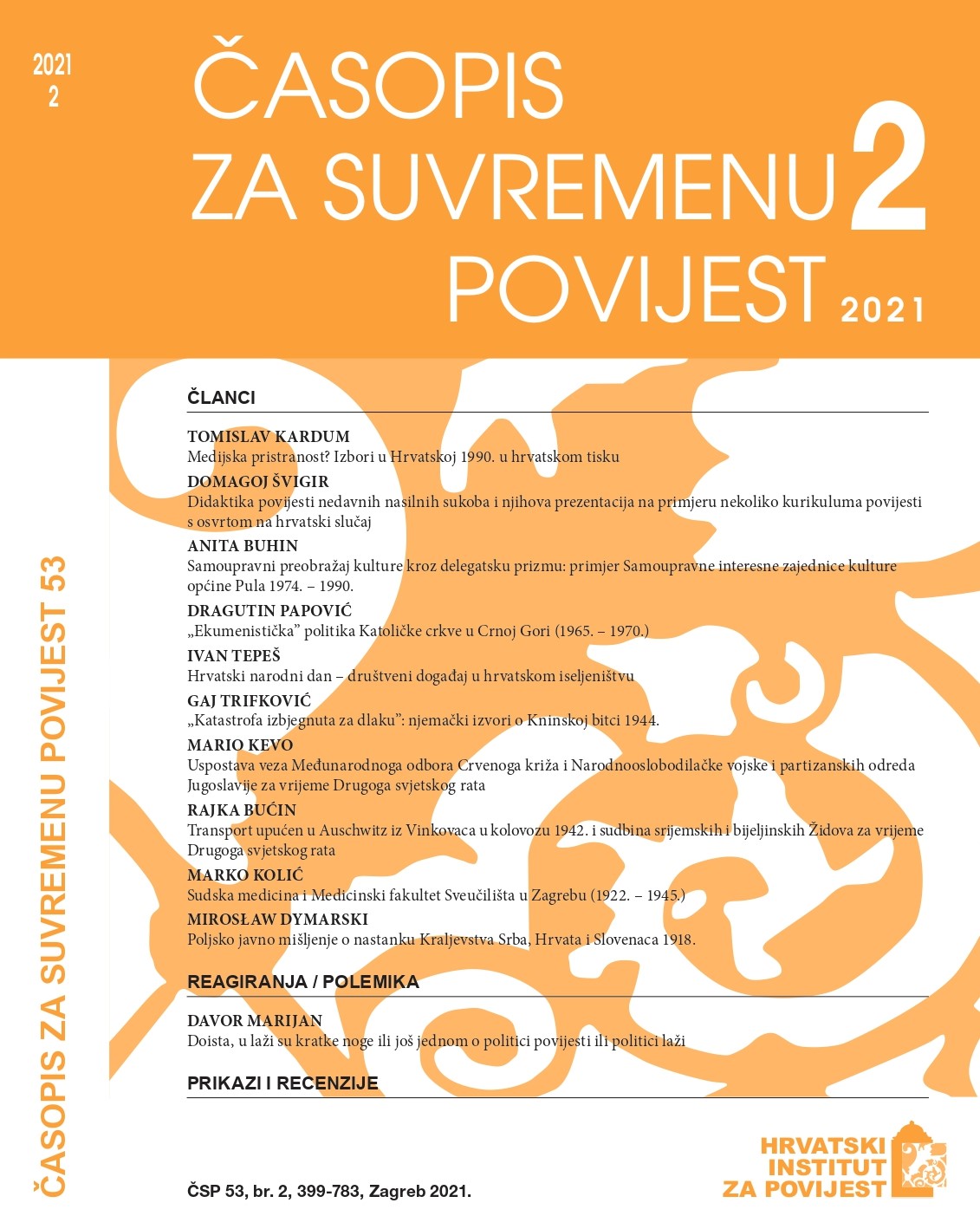Transport upućen u Auschwitz iz Vinkovaca u kolovozu 1942. i sudbina srijemskih i bijeljinskih Židova za vrijeme Drugoga svjetskog rata
Transport Sent to Auschwitz from Vinkovci in August 1942 and the Fate of Syrmian Jews and Jews from Bijeljina during World War II
Author(s): Rajka BućinSubject(s): WW II and following years (1940 - 1949), Fascism, Nazism and WW II, History of the Holocaust, History of Antisemitism
Published by: Hrvatski institut za povijest
Keywords: Independent State of Croatia (ISC); Holocaust; Auschwitz; Jasenovac; detention camp in Vinkovci; Syrmia; Bijeljina;
Summary/Abstract: In August 1942, five transports were sent to the concentration camp Auschwitz-Birkenau from the territory of the Independent State of Croatia (ISC), with approximately 5,000 Jews. One of them was sent from Vinkovci with circa 1,000 Jews. It left the territory of the ISC on 19 August, and arrived in Auschwitz on 22 August. The transport has been only partially researched, mostly regarding victims from the Serbian part of the Syrmia region, without taking into account the complete picture, and with various omissions and mistakes. Documents scattered in numerous archival and other heritage institutions, many of them unknown to research communities in Croatia and Serbia, compared with statistical data for inhabitants of the settlements included in the analysis, reveal what was going on with Jewish communities not only in the wider region of Syrmia (Srijem), nowadays in Croatia and Serbia, but also in Bijeljina in Bosnia and Herzegovina, from where Jews were also incorporated into that transport. The analysis includes not only Jews who were sent to Auschwitz via the detention camp in Vinkovci, where they were kept during July and August 1942 (Jews from Vukovar, Županja, Ruma, Sremska Mitrovica, Bijeljina, Ilok, Šid, maybe some from Stara Pazova), but also those who were sent to the concentration camps in Jasenovac and Stara Gradiška from May to August 1942 (Jews from Vinkovci and Zemun, most of the Jews from Stara Pazova, maybe/probably some of those from Ilok and Šid). The paper also includes a review of the destiny of Syrmian and Bijeljina’s Jews during 1941 and in the earlier period of 1942. The Holocaust was almost complete in those areas in August 1942. The only exemption was granted to Jews in mixed marriages and their children, those employed in medical services, and individuals who were exempt on some other basis. Most of them perished in the next wave of deportations in May 1943. The results of the research give a clearer picture of the flow of Holocaust in that part of the territory of the ISC and can be used for the correction and supplementation of the data about victims, not only of the individuals who perished in Auschwitz, registered in the death books from the camp or confirmed as victims of that camp by other sources, but also of those who perished in the concentration camps Jasenovac and Stara Gradiška. Regarding the Croatian part of Syrmia, some new results refer to the victims from Vukovar and Ilok who perished in Auschwitz but were previously linked to the Jasenovac and Stara Gradiška camps. Some of the victims, e.g. those from Županja, were not registered at all, and were mostly deported to Auschwitz. The data for Jews from Vinkovci and Zemun, almost all of whom perished in Jasenovac and Stara Gradiška from May to July 1942, can also be updated from the transfer lists of the Ustasha Surveillance Service (Ustaška nadzorna Služba, UNS) used in this research.
Journal: Časopis za suvremenu povijest
- Issue Year: 53/2021
- Issue No: 2
- Page Range: 611-660
- Page Count: 50
- Language: Croatian

